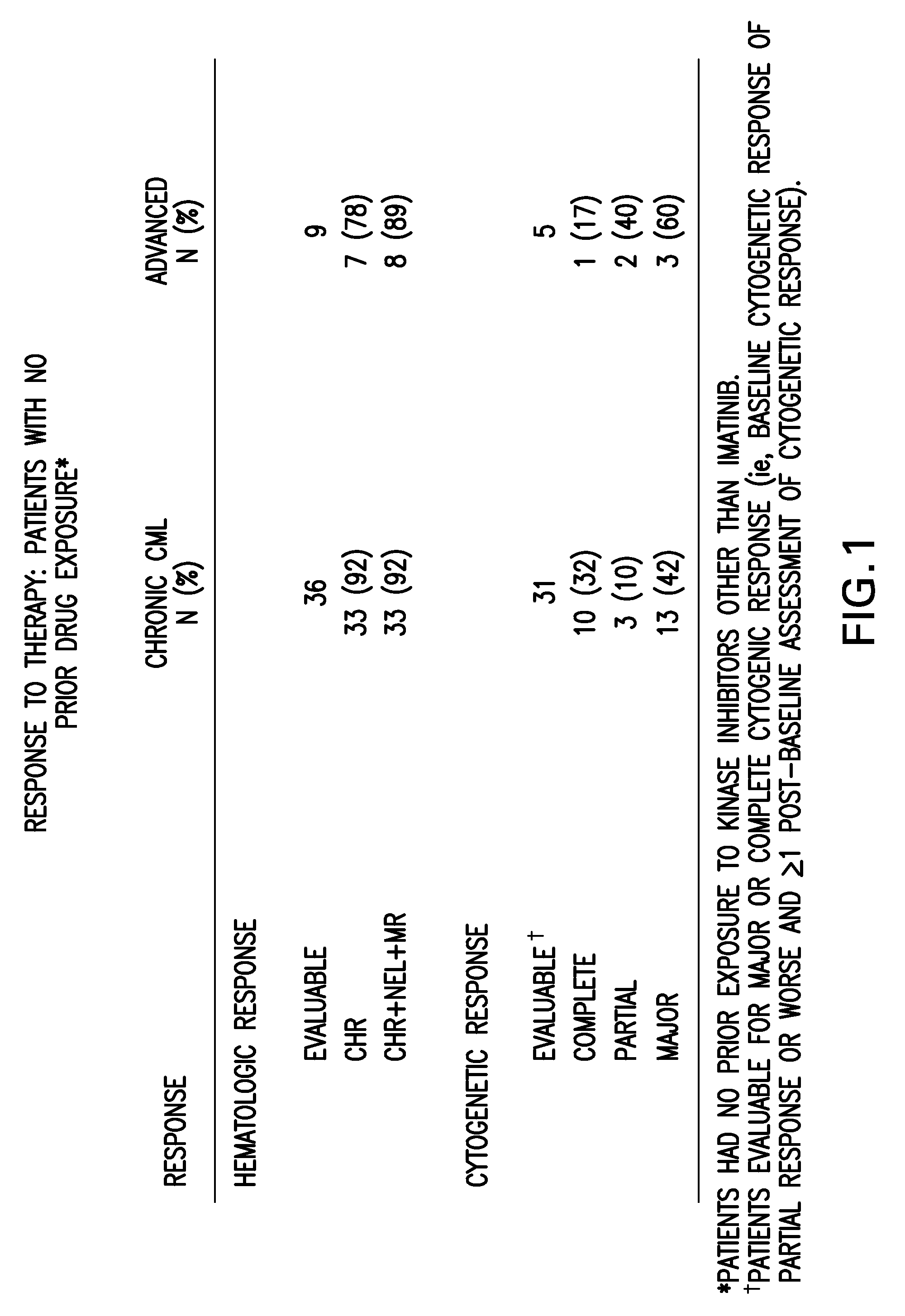Treatment of imatinib resistant leukemia
a technology of imatinib and leukemia, which is applied in the direction of drug compositions, biocide, heterocyclic compound active ingredients, etc., can solve the problems of hematologic toxicities and edema, poor prognosis, and relapse of patients' disease, and achieves the effects of reducing the risk of recurrence, and improving the survival ra
- Summary
- Abstract
- Description
- Claims
- Application Information
AI Technical Summary
Benefits of technology
Problems solved by technology
Method used
Image
Examples
example 1
[0067]Mutations known to be associated with resistance to imatinib are located in the bcr / abl gene are as follows, with the nucleotide position and the nucleotide change shown and followed in parentheses by the corresponding amino acid change shown in parentheses: 1052T>C (M351T); 1075T>K (F359V); 1187A>M (H396P); 1295T>Y (1432T); 1457T>C (F486S); 730A>G (M244V); 742C>S (L248V); 749G>R (G250E); 757T>C(Y253H); 758A>T (Y253F); 763G>R (E255K); 787A>R (K263E); 817T>A (L273M); 944C>T (T3151); 949T>C (F317L); and 992A>G(N331S).
[0068]Bone marrow aspirate samples were collected from subjects who failed imatinib treatment for Chronic Myeloid Leukemia, prior to dosing with SKI-606. The baseline bcr / abl gene was sequenced and point mutations were recorded. The patients were then dosed with SKI 606 and followed for best Cytogenetic and confirmed Hematological responses. Doses averaged between 400 mg and 600 mg per patient per day. It was confirmed that SKI-606 treatment resulted in cytogenetic ...
example 2
[0071]4-[(2,4-Dichloro-5-methoxyphenyl)amino]-6-methoxy-7-[3-(4-methyl-1-piperazinyl)propoxy]-3-quinolinecarbonitrile mp 116-120° C.; MS (ES) m / z 530.2, 532.2 (M+1);
example 3
[0072]4-[(2,4-Dichloro-5-methoxyphenyl)amino]-7-[3-(4-ethyl-1-piperazinyl)propoxy]-6-methoxy-3-quinolinecarbonitrile; mp 102-104° C.; MS (ES) m / z 544.3, 546.4 (M+1);
PUM
| Property | Measurement | Unit |
|---|---|---|
| Magnetic field | aaaaa | aaaaa |
| Magnetic field | aaaaa | aaaaa |
| Electric charge | aaaaa | aaaaa |
Abstract
Description
Claims
Application Information
 Login to View More
Login to View More - R&D
- Intellectual Property
- Life Sciences
- Materials
- Tech Scout
- Unparalleled Data Quality
- Higher Quality Content
- 60% Fewer Hallucinations
Browse by: Latest US Patents, China's latest patents, Technical Efficacy Thesaurus, Application Domain, Technology Topic, Popular Technical Reports.
© 2025 PatSnap. All rights reserved.Legal|Privacy policy|Modern Slavery Act Transparency Statement|Sitemap|About US| Contact US: help@patsnap.com



